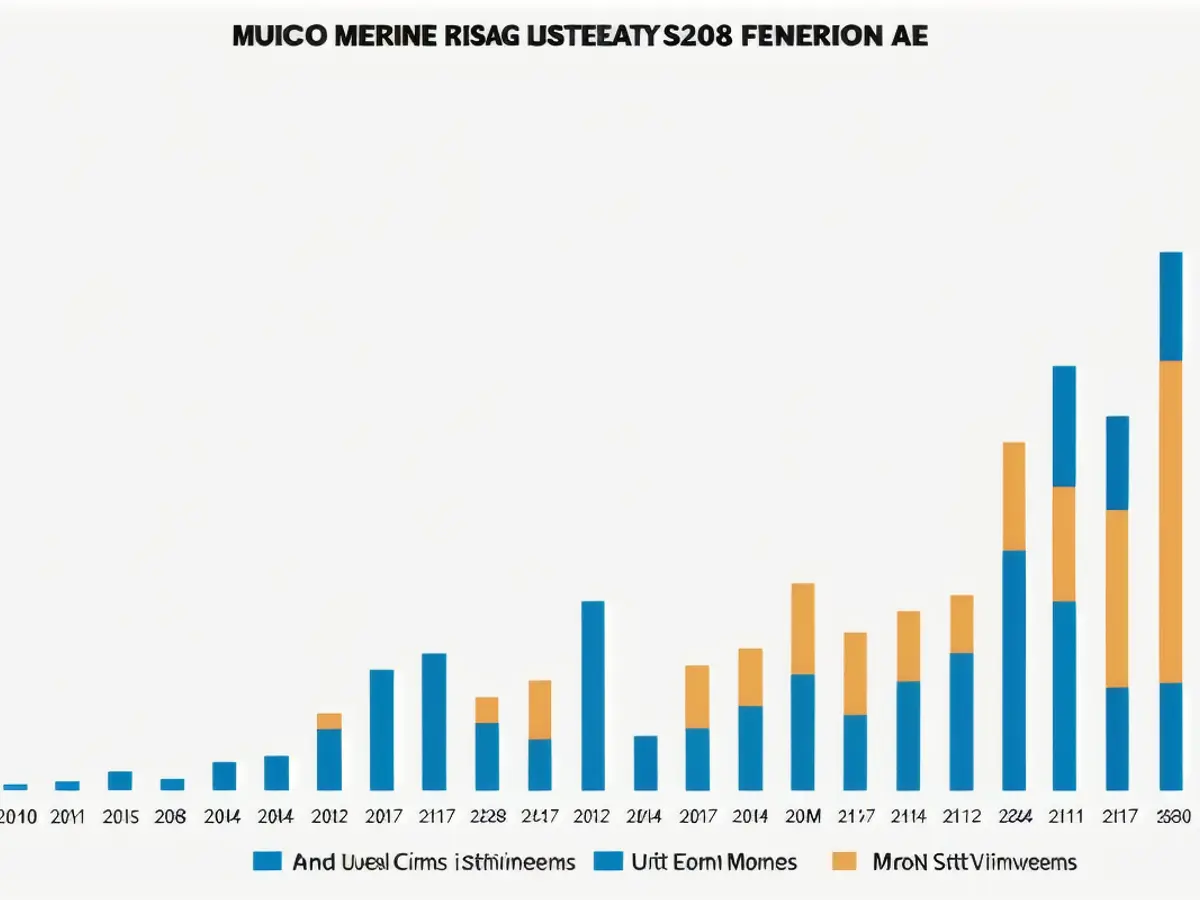Rapid, Cost-Effective Power Solution: Solar-Plus-Storage Leads in Meeting Increasing Energy Demand
Unleashing Solar-Plus-Storage: America's Powerhouse for the Future
The future of electricity generation in the United States is set to change dramatically, with electricity demand potentially skyrocketing by 16% by 2030. To address this growing demand, controversies around gas plants, revived coal or nuclear power, and the swift rise of solar-plus-storage are heating up conversations across the nation.
Utility companies have often embraced gas as a solution, while others propose restarting old coal or nuclear plants. However, the cheapest, fastest-to-build option—solar energy combined with battery storage, or solar-plus-storage—has taken America by storm. In 2024, solar-plus-storage had a staggering 84% share of new U.S. grid capacity, installing 37 gigawatts of solar generation and 10 GW of utility-scale storage capacity.
This surge in popularity can be attributed to clear advantages—they are the cheapest and quickest options available to bring online. NextEra Energy, one of the country's largest utilities, underlined the urgency, with executives stating, "You can build a storage facility in 15 months and a solar project in 18 months. When is gas really going to be able to contribute at scale?"
Utilities are under pressure to build new generation at the lowest possible price to deliver the electricity customers need. Recklessly choosing costly and time-consuming options could leave consumers shouldering the bill, or even worse, power shortages.
An Energetic Storm Approaching
The data center boom could cause energy consumption to triple by 2028, accounting for up to 12% of national electricity use. Add to that the resurgence of manufacturing, thanks to the Inflation Reduction Act attracting $600 billion in industrial investment, electric vehicles, and increased residential power demand, and it's no wonder the North American Electric Reliability Corporation has sounded the alarm on potential blackouts.
Though gas remains the largest contributor to America's electricity (accounting for 40% in 2024), solar is the fastest-growing electricity source. Over the past decade, solar use has grown a whopping 7.8-fold, outpacing gas's 1.4-fold growth rate. Solar and wind power now provide 17% of U.S. electricity supply, enough to power an impressive 70 million homes.
This growth not only complements, but supplants, gas. Solar contributed 64 terawatt-hours of generation in 2024, surpassing last year's 59 TWh increase in gas, and reducing dependency on an inherently volatile fuel that raised electricity bills by 14% in 2022.

Shining a Light on Solar-Plus-Storage
Solar-plus-storage is emerging as the ideal solution to bridge the gap between growing demand and dwindling resources. Clean energy can come online fast enough to meet rising demand without the need for gas. California, which experienced blackouts during record heatwaves in 2020, navigated the summer of 2022 without any major issues, due in large part to a surge in storage capacity.
Texas, which wasted no time setting new power demand records last summer and peaking again in 2030, has added 19 GW of solar and 6.2 GW of storage since 2019, helping the state keep the lights on even during heatwaves and massive data center growth. Solar-plus-storage provides reliable power during peak hours, discharging cheaply when needed, rather than the high cost of a new gas turbine.
New gas plants face significant hurdles to near-term growth, as major gas turbine manufacturers have delivery backlogs until at least 2029. In comparison, solar-plus-storage—forecasted to be the primary source of new capacity by 2028—can be installed quickly, with the U.S. Energy Information Administration reporting utility plans to add 110 GW of solar and 63 GW of storage before 2028, versus just 25 GW of gas.
American manufacturers are ready to meet this growing demand, with domestic solar manufacturing capacity more than tripling from 14.5 GW in 2023 to 50 GW in early 2025. Battery manufacturing is expanding as well, with the U.S. aiming to add more than 80 GW of new storage manufacturing capacity by 2028.
Solar-Plus-Storage: The Budget-Friendly Choice
Solar-plus-storage's biggest asset might be its ability to keep customer costs stable, which is particularly important in light of rising electricity prices across the nation, with average household electricity prices increasing 21.9% from 2018 to 2023, and set to rise another 7% in 2025.
Analysis from Energy Innovation reveals that the primary causes of power bill increases are volatile fossil gas prices, costly coal plants that are less efficient than renewables, extreme weather, and transmission costs. States that installed the most wind and solar since 2010, like Iowa, Oklahoma, and New Mexico, saw lower rate increases than inflation.

Building gas to meet rising power demand could drive electricity bills even higher. The EIA predicts a 91% increase in gas costs from 2024 to 2026, with additional risk due to new liquefied natural gas exports. Paul Cicio, President of the Industrial Energy Consumers of America, warns, "Every dollar increase in natural gas costs consumers $34 billion plus about $20 billion in higher electricity costs."
However, solar and battery storage costs have plummeted by around 90% over the last decade. By 2035, solar costs may fall by nearly 10%, and battery storage costs may fall nearly 50%.
"New solar plants, even without subsidies, are within touching distance of new U.S. gas plants," states Amar Vasdev of BloombergNEF. "Solar will become even more compelling in the coming years, especially if the U.S. starts exporting liquified natural gas and exposes its protected gas market to global price competition."
Perserving existing federal policies could help ensure these falling prices keep consumer costs low. A study from 17 universities, think tanks, national laboratories, and a federal agency predicted that clean energy tax credits could cut monthly customer electricity bills 4.5% in 2030, and up to 8.6% in the decades that follow.
However, the Trump administration has targeted these provisions, threatening to repeal them to pay for tax cuts for wealthy individuals, despite opposition from 21 Republican members of the House of Representatives. A February 2025 analysis by Brattle for conservative environmental group ConservAmerica estimated that repealing the IRA would spike U.S. electricity costs $51 billion per year by 2035.
Shaping America's Energy Future
The policy decisions and investment choices our government and utilities make today will shape the reliability and affordability of America's grid for years to come. With demand growing rapidly, solar-plus-storage is the optimal choice for adding generation without exposing consumers to volatile prices or supply chain challenges.
John Ketchum, CEO of NextEra Energy, sums it up: "We've got to be really careful here from an affordability standpoint about the choices we're making... What we don't want to do is drive ourselves to only one solution - that being a gas-fired solution - that's now more expensive than it ever has been in its history... It just so happens that the most economic solution comes with clean energy benefits."
- As the demand for electricity increases, renewables like solar energy and battery storage are agreeing with utility companies as the best option to meet this demand, offering the cheapest and quickest solutions for added generation capacity.
- Solar-plus-storage has emerged as an ideal solution to Supplement existing power sources and bridge the gap between growing demand and dwindling resources, offering reliable power during peak hours without the need for gas.
- With falling costs for solar and battery storage, policymakers agree that investment in solar-plus-storage is a budget-friendly choice that could help preserve affordability in electricity prices, despite volatile fossil gas prices and transmission costs.



